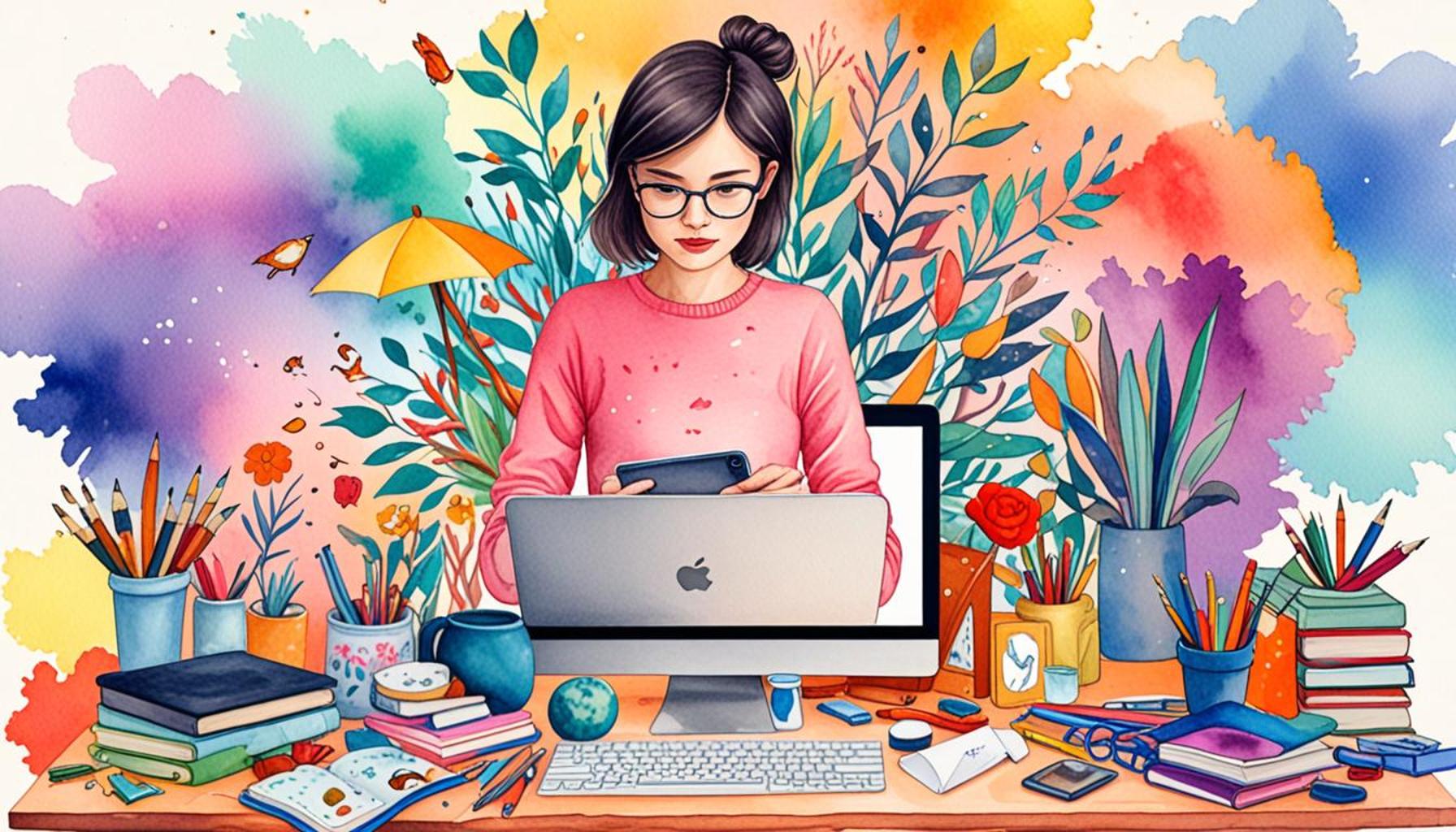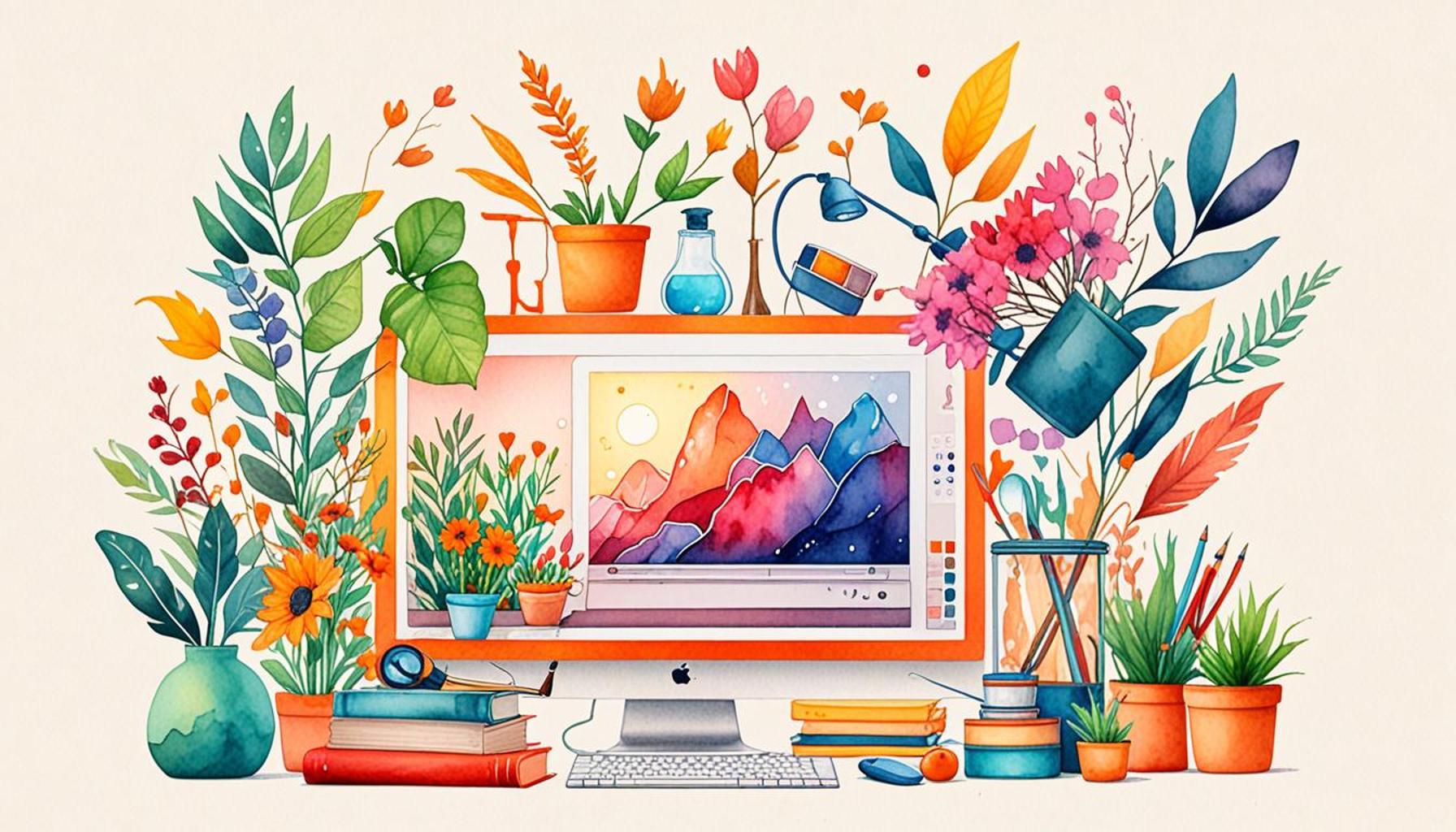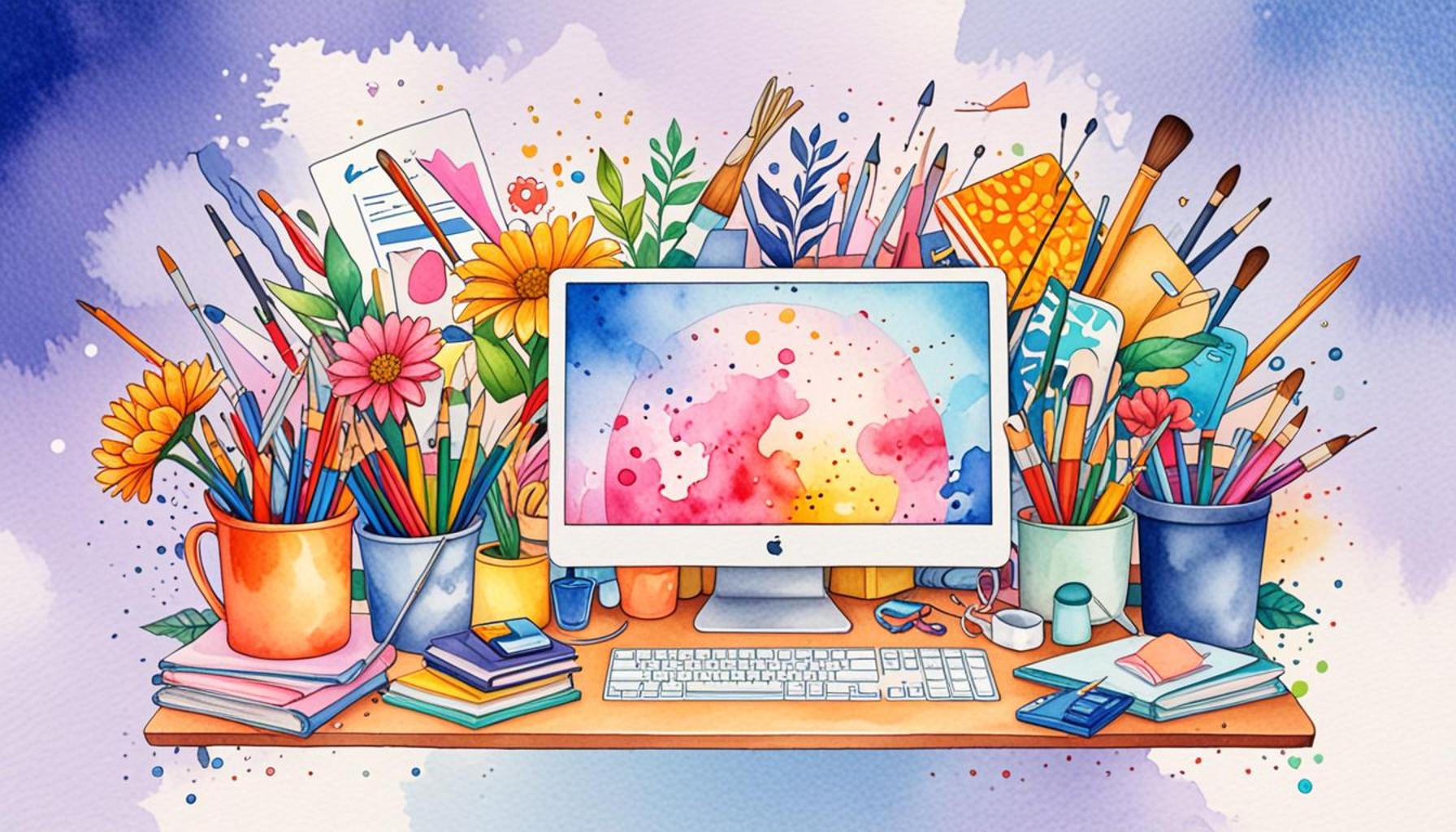Digital Decluttering as a Tool for Self-Knowledge: Exploring What Truly Matters in Your Virtual World

Understanding Digital Overload
The digital age has given us unprecedented access to information and connectivity, but it has also led to a significant downside—digital clutter. Every day, we encounter an influx of notifications, emails, and alerts from various applications that can overwhelm us. This barrage of digital communication can make it challenging to focus on what is genuinely important, leading to anxiety and a sense of being lost in a sea of data.
In the United States alone, studies show that adults spend over 11 hours per day interacting with digital media. This extensive engagement can lead to the feeling of being perpetually ‘on,’ leaving little time to reflect or engage with the physical world around us. The consequences are striking; people report increased fatigue, reduced productivity, and even a decline in overall mental health.
Embracing Digital Decluttering
To combat these challenges, embracing digital decluttering has emerged as a transformative practice. This process involves critically evaluating your digital habits and simplifying them to foster a more streamlined experience. Here’s what digital decluttering can help you achieve:
- Enhanced Focus: By fighting through the noise of incessant notifications and irrelevant apps, you can regain control of your attention. For instance, turning off non-essential notifications can lead to fewer distractions during important tasks or conversations.
- Better Self-Awareness: Assessing your digital use can unveil insights about your personal values and priorities. For example, if you realize you spend excessive time on social media, it might highlight areas of your life where you seek connection or affirmation.
- Emotional Clarity: A less cluttered digital environment can contribute significantly to improved mental well-being. Research has shown that social media breaks can lead to increased feelings of happiness, as users often feel less pressure and comparison to others.
Consider your own digital footprint. Take a moment to reflect on how many apps you have downloaded on your smartphone that remain untouched. In many cases, an average user has around 80 apps on their phone but only frequently uses about 10-15 of them. What about the overflowing inbox with thousands of unread emails that only serve to create anxiety? Cleaning up these digital spaces is not just about organization; it’s about creating room for clarity.
As we continue to explore the concept of digital decluttering, consider the profound implications it has for self-discovery. It invites each of us to examine what truly matters in our digital worlds and encourages us to create a streamlined yet purposeful online experience. So, take the plunge into the realm of digital decluttering and witness a transformation not only in your digital life but also in your overall well-being.

DISCOVER MORE: Click here to learn about prioritization
Unpacking the Layers of Digital Clutter
The notion of digital decluttering transcends mere organization; it taps into an essential journey of self-discovery. As we peel back the layers of our online behaviors, it becomes apparent that our digital lives are often a reflection of our inner selves. By critically assessing what we keep and what we let go, we can not only reclaim our digital spaces but also unearth deeper insights about our preferences, habits, and values.
One of the first steps in this decluttering process is identifying the motivations behind our digital engagements. Why do we turn to specific apps or platforms? For many, social media serves as an escape, a way to connect with friends, or even a source of validation. With studies indicating that over 70% of Americans use social media, understanding the impact it has on our lives is crucial. Are we using it, or is it using us? This introspection can guide users in determining whether their digital engagements are enriching their lived experiences or detracting from them.
Identifying Digital Clutter Triggers
Recognizing what constitutes digital clutter in our lives is the next pivotal step. Common elements might include:
- Unused Applications: Many smartphones are home to apps that have long been abandoned or never fully utilized. Evaluating which applications truly serve a purpose can help streamline your device and mental space.
- Overwhelming Notifications: Constant pings can lead to distraction fatigue. By customizing notification settings, users can prioritize essential alerts and minimize interruptions.
- Redundant Content: Whether it’s an overflowing inbox filled with promotional emails or bookmarked articles you’ll never read, recognizing which content no longer holds value is key to digital decluttering.
As we reflect on these factors, it becomes clearer that digital decluttering is not solely a housekeeping task but a gateway to greater self-awareness. This process compels us to take stock of our interactions and the various mediums through which we connect. Evidence suggests that individuals who engage in regular decluttering are more likely to report enhanced emotional well-being and a more profound understanding of their personal needs and aspirations.
Imagine the liberation of stepping away from the cacophony of neglected apps and endless notifications. What if, instead of feeling tied to your devices, you could free yourself to engage meaningfully with the world around you? The act of decluttering can foster a clarity that extends beyond the virtual realm, paving the way for a more intentional and fulfilling life.
Thus, as we continue this exploration into digital decluttering, let us reflect on what resonates most in our online experiences. By discerning the noise from the nuances, we start to identify not just our digital selves but our authentic selves. The digital landscape becomes not only a space of consumption but one of personal revelation and growth.
In our increasingly digital lives, digital decluttering emerges as a vital practice, guiding us towards a deeper understanding of what genuinely matters in our virtual engagements. By taking the time to evaluate and streamline our online spaces, we can foster greater emotional clarity and enhance our relationship with technology. This process is not only about reducing the digital noise but also about embracing a more intentional approach to our online presence.When we participate in digital decluttering, we often discover unnecessary distractions that cloud our focus, whether they are outdated files, unused applications, or excessive social media accounts. This realization can lead to a significant improvement in our productivity and mental well-being. The act of organizing and prioritizing our digital assets helps us shed a heavy emotional load, making space for the content and interactions that align with our values and aspirations.Moreover, the practice of decluttering offers profound insights into our identity and desires. As we assess each app, email subscription, and online relationship, we are forced to confront our current priorities and time investments. Are we nurturing connections that foster our growth? Are we consuming content that enriches our lives? This self-reflection can be transformative, revealing patterns of behavior and thought that may have gone unnoticed amidst the chaos of our digital environments.Investigating further into this practice, there are resources available for individuals looking to delve into digital decluttering. From digital minimalism courses to coaching sessions, many are offering tools and strategies to transform one’s online experience and instill a sense of control. The journey does not have to be a solitary one; communities are emerging, sharing stories and techniques that inspire others in their quest for digital clarity.As we embark on this enlightening journey, it is crucial to remain aware of our evolving digital landscapes. Regular audits of our online engagement can reinforce our commitment to self-discovery and mindful living, ensuring that we stay attuned to what *truly matters* amidst the myriad of distractions available at our fingertips.
DISCOVER MORE: Click here for inspiration on a simple aesthetic in home office organization
Understanding Your Digital Footprint
As we delve deeper into digital decluttering, it’s crucial to acknowledge the concept of a digital footprint—essentially, the data trail we leave behind as we navigate the online world. Our footprint encompasses social media interactions, online purchases, and the content we consume. Recognizing the extent of this footprint can illuminate aspects of our personal identity that we may not have consciously acknowledged.
Consider, for instance, how our online interactions shape our self-perception. Research indicates that individuals frequently curate their online personas, often leading to a discrepancy between who they appear to be in the digital realm and their true selves. This phenomenon, often referred to as the “highlight reel” effect, can skew our understanding of what constitutes meaningful connections and authentic experiences. Thus, embracing a digital decluttering approach can prompt users to critically assess their online representations and consider whether these personas align with their core values and beliefs.
Curating Meaningful Connections
Another dimension of digital decluttering is evaluating our connections and interactions. In a world where platforms like Facebook boast over 2.8 billion monthly active users, it’s easy to accumulate “friends” and “followers” without genuine engagement. By refining our social circles, we can enhance the quality of our interactions. This process involves:
- Assessing Friend Lists: Review your social media connections and identify which relationships contribute positively to your life. Are there individuals who leave you feeling drained or inadequate? It might be time to redefine these connections.
- Engaging Meaningfully: Instead of passively scrolling, focus on fostering relationships that matter. Comment on posts that resonate with you, or reach out to reconnect with friends through direct messages.
- Prioritizing Communities: Evaluate your involvement in online groups or forums. Are they enhancing your knowledge and supporting your interests, or are they just adding to the noise? Surrounding yourself with uplifting communities can positively influence your mindset and overall happiness.
Through these practices, individuals can transform their online experience into one that aligns with their true selves. A study published by the American Psychological Association found that people who actively engage in meaningful self-reflection report greater satisfaction in their personal and professional lives. As we streamline our digital connections, we create space for more fulfilling interactions and genuine relationships.
From Consumption to Creation
Digital decluttering does not solely demand the removal of what doesn’t serve us; it also encourages a shift from passive consumption to active creation. How many hours do we spend mindlessly scrolling through feeds, absorbing content without thought? It’s estimated that the average American spends around 2 hours and 31 minutes on social media daily. Instead of being mere consumers of digital content, we can pivot towards becoming content creators. This transition can take many forms:
- Sharing a Passion: Whether it’s starting a blog, creating videos, or sharing art, expressing genuine interests can lead to personal empowerment and foster connections with like-minded individuals.
- Learning and Growing: Invest time in online courses or webinars that align with your interests. Platforms like Coursera or Skillshare provide avenues to acquire new skills while also networking with peers who share similar ambitions.
- Documenting Your Journey: Keeping a digital journal or blog can serve as a means to reflect on personal growth and discover core values during the decluttering process.
By embracing a mindset of creation, we not only take back control of our digital existence but also elevate our self-knowledge. As we navigate this complex digital landscape, we begin to ascertain what truly matters, aligning our virtual interactions with our objectives and values. The process of digital decluttering can thus morph into a transformative journey, steering us toward a more authentic and intentional life.
DISCOVER MORE: Click here to dive deeper
Conclusion
In today’s fast-paced digital landscape, digital decluttering emerges as an essential practice for reclaiming not only our online spaces but also our sense of self. By reassessing our digital habits, we foster a better understanding of our true values and priorities. This mindful approach to our virtual world allows us to sift through the overwhelming noise, promoting genuine connections and enriching our personal narratives.
The journey of digital decluttering invites us to question the nature of our relationships, the content we consume, and the personas we project. By engaging meaningfully with others and creating rather than just consuming, we lay the groundwork for deeper self-knowledge and a more authentic existence. As individuals refine their digital footprints, they enhance their capacity for introspection and self-discovery, ultimately leading to more fulfilling lives.
This transformative process not only improves online interactions but also encourages a state of awareness that resonates beyond the screen. Looking forward, consider what your digital environment reflects about you. Is it an amplification of your aspirations, or is it cluttered with distractions? Embrace digital decluttering as a catalyst for self-knowledge, and embark on a journey that prioritizes what genuinely matters in your virtual world. Taking these steps opens doors to authentic experiences, meaningful relationships, and a life aligned with your true self.
As you navigate this path, remember that you are not just decluttering your digital space; you are also creating room for a more intentional and satisfying life.


